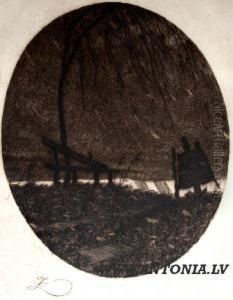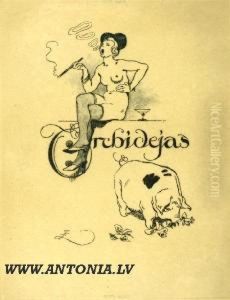Rihards Zarins Paintings
Rihards Zariņš was a prominent Latvian graphic artist, painter, and educator, who played a significant role in the development of the graphic arts in Latvia during the late 19th and early 20th centuries. Born on April 27, 1869, in the town of Kocēni, Latvia, which was then part of the Russian Empire, Zariņš was exposed to art at a young age. He pursued his passion for art by studying at the St. Petersburg Academy of Arts, where he honed his skills and developed his distinctive style.
After completing his studies, Zariņš returned to Latvia and became an influential figure in the local art scene. He was a versatile artist, working in various mediums such as watercolor, printmaking, and illustration. He was particularly known for his detailed banknote and stamp designs, which played a pivotal role in the establishment of Latvia's national identity during its independence period following World War I.
Zariņš' work was characterized by its intricate line work and national romanticism, often drawing on Latvian folklore, mythology, and rustic scenes for inspiration. He also served as the head of the Graphic Workshop at the Latvian Academy of Art and was instrumental in establishing the graphic arts curriculum there.
In addition to his contributions to graphic arts and education, Zariņš was also involved in the design of Latvian banknotes and passports. His designs for the Latvian currency were used for many years and are considered classics of the genre, showcasing his mastery of engraving and his patriotic spirit.
Rihards Zariņš passed away on December 21, 1939, in Riga, Latvia. His legacy continues to influence Latvian artists and his work remains celebrated for its beauty and national significance. Today, his contributions to Latvian culture and art are remembered and honored, and his works are showcased in museums and galleries throughout the country and beyond.

